Reflections on Seaside
About a month ago, I had the great fortune to travel to Seaside, FL. The ostensible reason for my visit was to attend the Seaside Award mini-conference, honoring the deep impact of Jeff Speck’s work on how planners and regular people understand walkability and street design. The event had a great lineup of speakers, including Jannette Sadik-Khan, Michael Bloomberg’s transportation commissioner who used tactical installations to first pedestrianize Times Square, Chuck Marohn of Strong Towns, former Mayor of Seattle Mike McGinn, and Harris County (TX) Commissioner, Rodney Ellis. It was an inspiring conversation about the opportunities to change how we think about transportation and streets in America.
But the other reason to attend was Seaside itself. Seaside is the great granddaddy of New Urbanism. An innovative design, engineering, and development playbook created by a group of renegade architects in the 1980’s lead by Andres Duany and Liz Plater-Zyberk together with a long-term-oriented developer to recreate the town building playbook from the pre-subdivision era. New Urbanism as a movement has come a long way since construction started in Seaside–lots of work has been done since then, refining insights and incorporating more perspectives, but you have a feeling of walking in a special place.
Seaside is also frequently lambasted by critics of the New Urbanism. It’s too expensive, too cute, too exclusive, too conformist, etc… “Did you know that they filmed the Truman Show there—because it’s like a fake fantasy of a nice small town?” And while the critics may be right that Seaside has become a very expensive resort–they are missing a lot while taking potshots from academia or design studios.
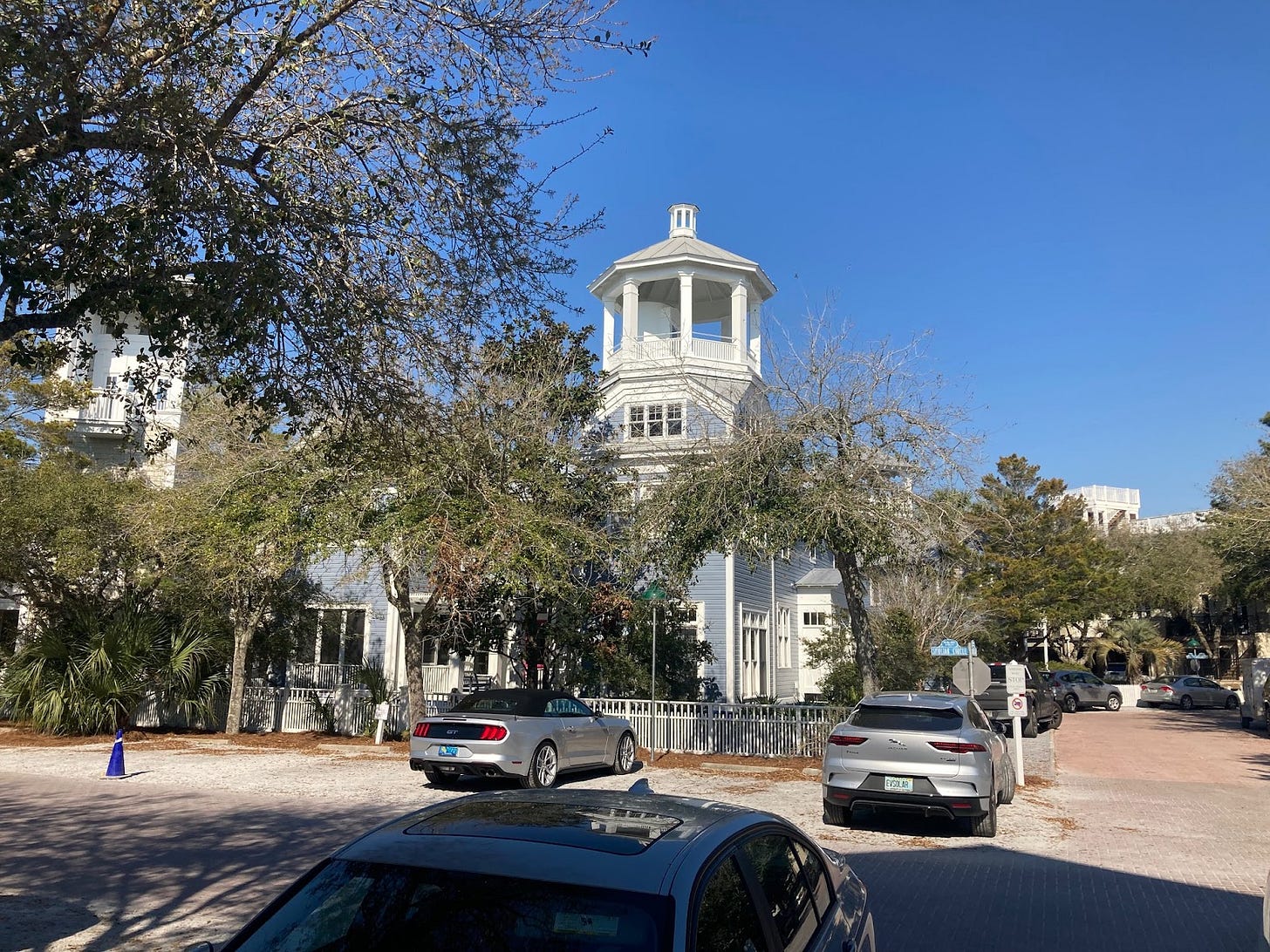
Seaside is really very nice
The reason Seaside has become so expensive is because it is so nice. One of the first things you notice checking into your cottage—because, of course, you are renting one of the many adorable cottages—is how quiet it is. The streets are true shared spaces and there is very little car traffic. Cars arrive and then park and are not used for days or weeks. This is possible because the town is so walkable (and parking so scarce). It’s a few minutes walk to the commercial and civic heart of town. There are a variety of parks for strolling, playing, or relaxing in. And the architecture is really quite beautiful. The rising value of the town has been invested into quality construction of a contemporary southern seaside vernacular. Many houses have “towers” that project an extra story up for water views, and the effect of the towers at sunset is really quite stunning.
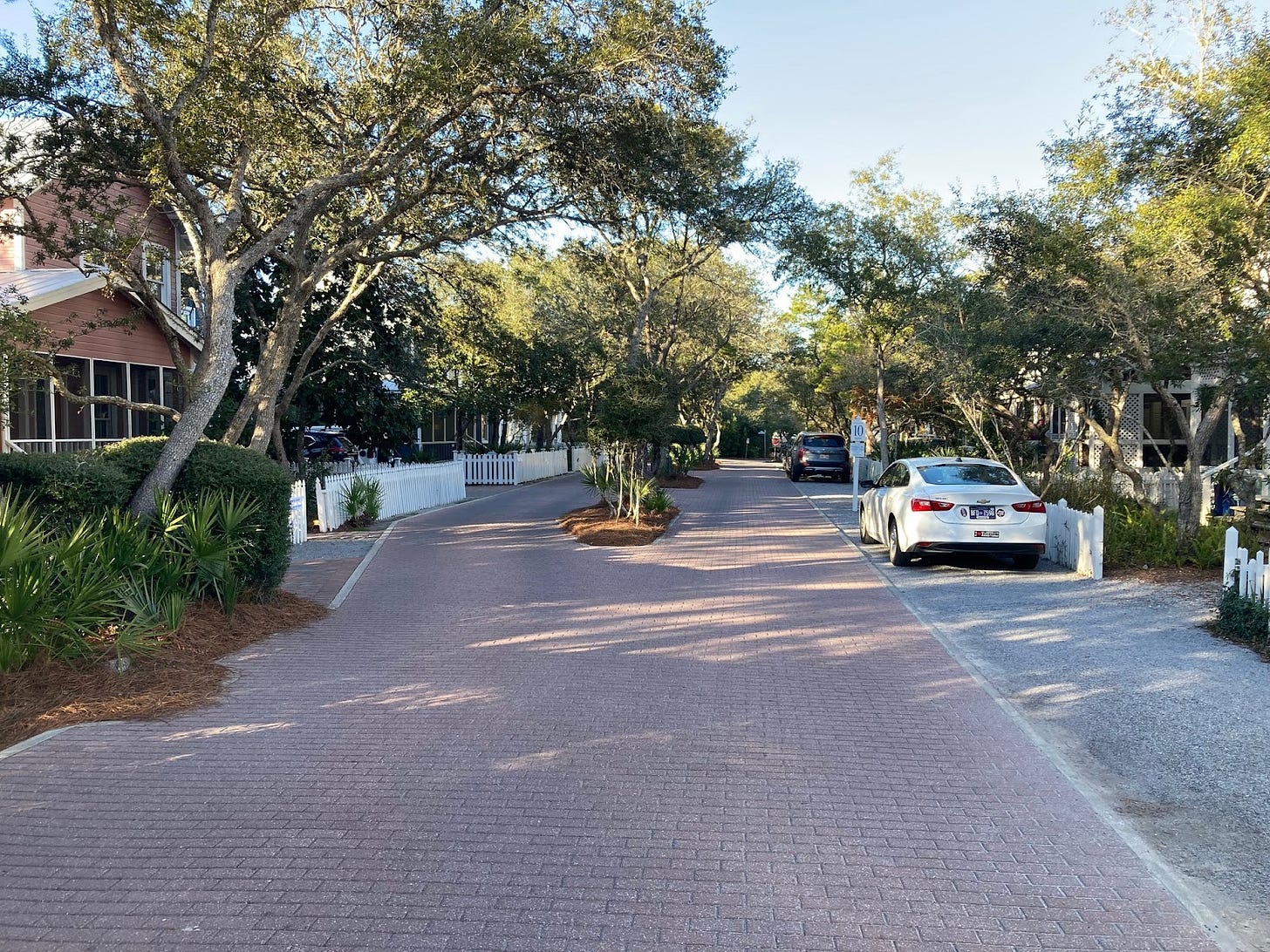
But it’s not that nice
But the next thing that you notice is that it’s not that nice. Seaside was originally built on a shoe-string budget and it often shows. Some of the older structures are showing their age. The paths and roadways are a little small, a little overgrown, a little sandy. It reminded me of the somewhat-grungy (and also very expensive) vacation areas of Cape Code, Nantucket, and Martha’s Vineyard. Seaside is rustic compared to some of the more polished, successor developments down the road.
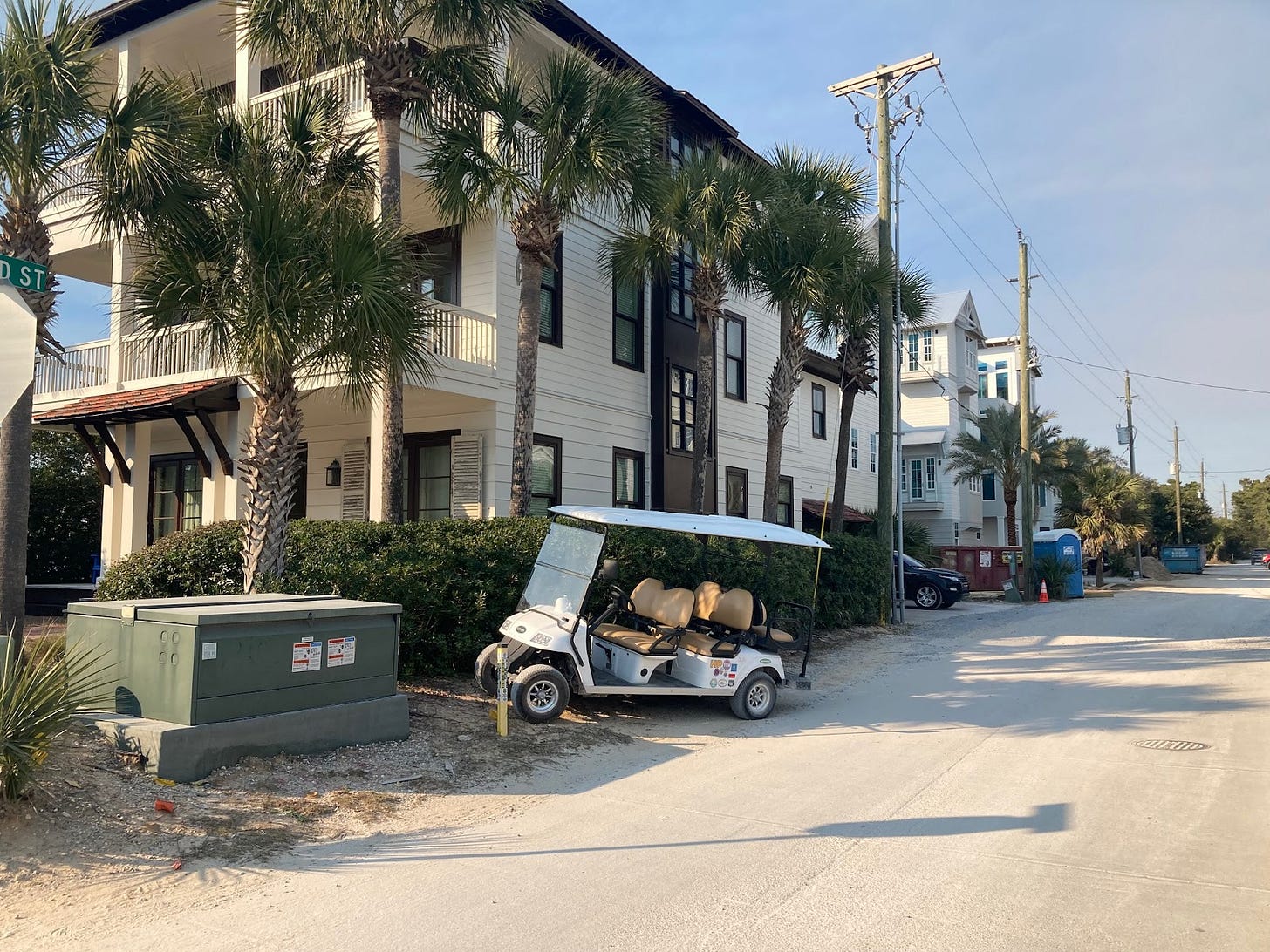
Engineers hate this one weird trick
If you’re involved in professional planning, development, or civil engineering, walking around Seaside you regularly run into things that make you go: “how in the world did they get that approved?” Whether it's the transformer boxes without giant ugly bollard enclosures or the casual approach to permeable pavement and stormwater management—you could never build Seaside today. Like: how would you input the design features into your HydroCAD model to make sure that there were no puddles after the 100 year storm? Can’t you see the lanes are too narrow for cars to pass each other at speed! (That’s kind of the idea). A grade change might be handled by a couple of pressure-treated 6”x6” rails and landscape spikes, instead of a the expensive block retaining wall you geotechnical engineer would specify. The informality of the public space, the low-impact design (only do as little as we must), and the iterative figuring it out (if it doesn’t work, let’s tweak it next year) harken back to the old way of building–the organic, evolved complexity of pre-modern towns around the world. One can’t help but wonder: what good is much of modern civil engineering?
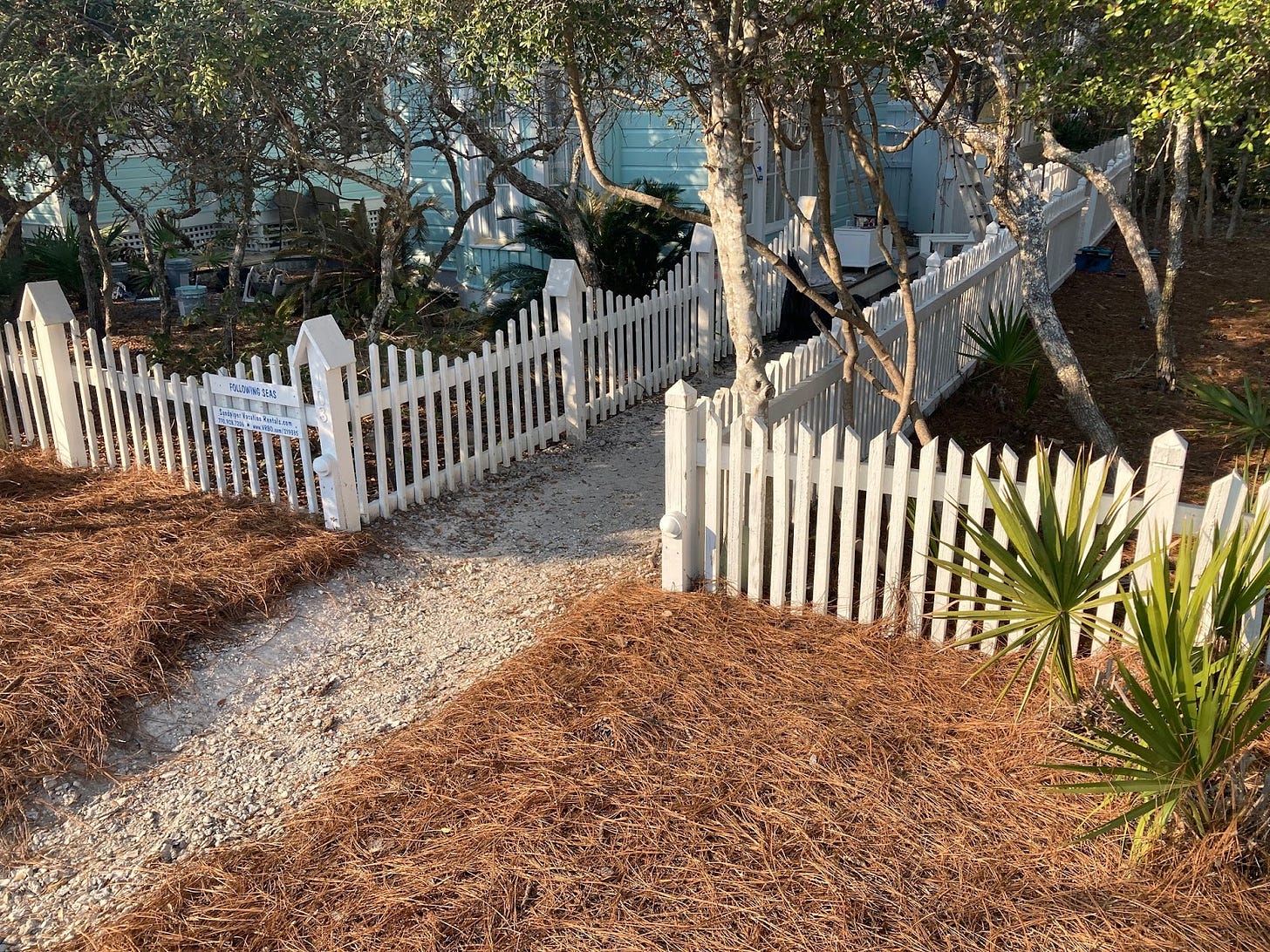
Seaside and the New Urbanism
It’s ironic to me that many architects, activists, and academics look down on New Urbanism because of “Seaside, Seaside, Seaside”—as if there had been nothing built or learned since its creation. Despite the wide ranging influence on planning, architecture, and development practice across cities & suburbs (from complete streets, to ADU’s, zoning reform), for many people their understanding of New Urbanism starts and stops with Seaside. And because Seaside is an expensive, low-density, greenfield resort… critics see New Urbanism as something that builds expensive, low-density, greenfield resorts. Sure Seaside has become expensive. But the right response isn’t to condemn it–it’s to build a thousand little towns like it , each with their own vibe.
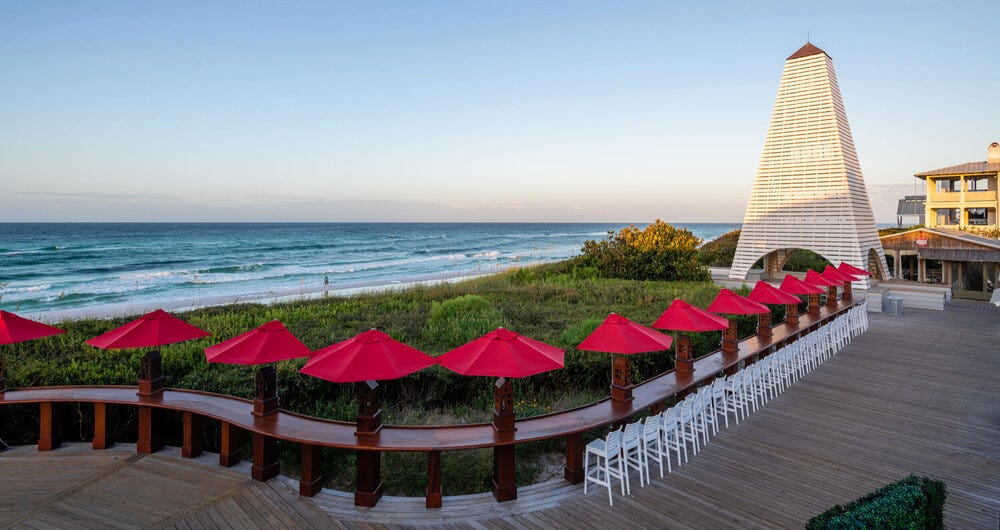
A 20th-Century developer model
What does it mean that it took a single, visionary, patient developer, Robert Davis, to create Seaside? A single developer can maintain more clarity of vision, can avoid watering down the design when pushing against the mold, and can support an incremental buildout over decades. Most good new-town developments today seem to be driven by a similar singular developer model (from Serenbe, GA, Culdesac in Tempe, AZ, to Poundbury, in England). But, for all the traditional architecture and urbanism, it’s not a very traditional development model. In most traditional new towns, a master planner might have an initial plan of streets and parcels, but after that individual property owners and builders would be up to their own devices. These new towns were typically built by people who shared a coherent building culture, so perhaps it could work better in the absence of top-down control than today’s developer hodgepodge… but there is something that feels very different, very 20th century, about the “one-master-builder” model.
Private associations, public spaces
Seaside was mostly built as for-sale homes, as is typical in Florida. Homes were to be managed through homeowners and condominium associations. In part because of their small size, nonprofessional members, and focus on individual homes rather than the community at large, homeowners associations are a poor way to manage urban spaces. The most successful public space in Seaside, Ruskin Square, is controlled by an association that recently decided to ban bikes. They could, in principle, even further restrict public access, and do so without the agreement of the broader community. When managing public space (including roads, parks, sidewalks, etc.) it’s important to keep decisionmaking about public spaces accessible to the whole community and responsive to the values and needs of the whole community.
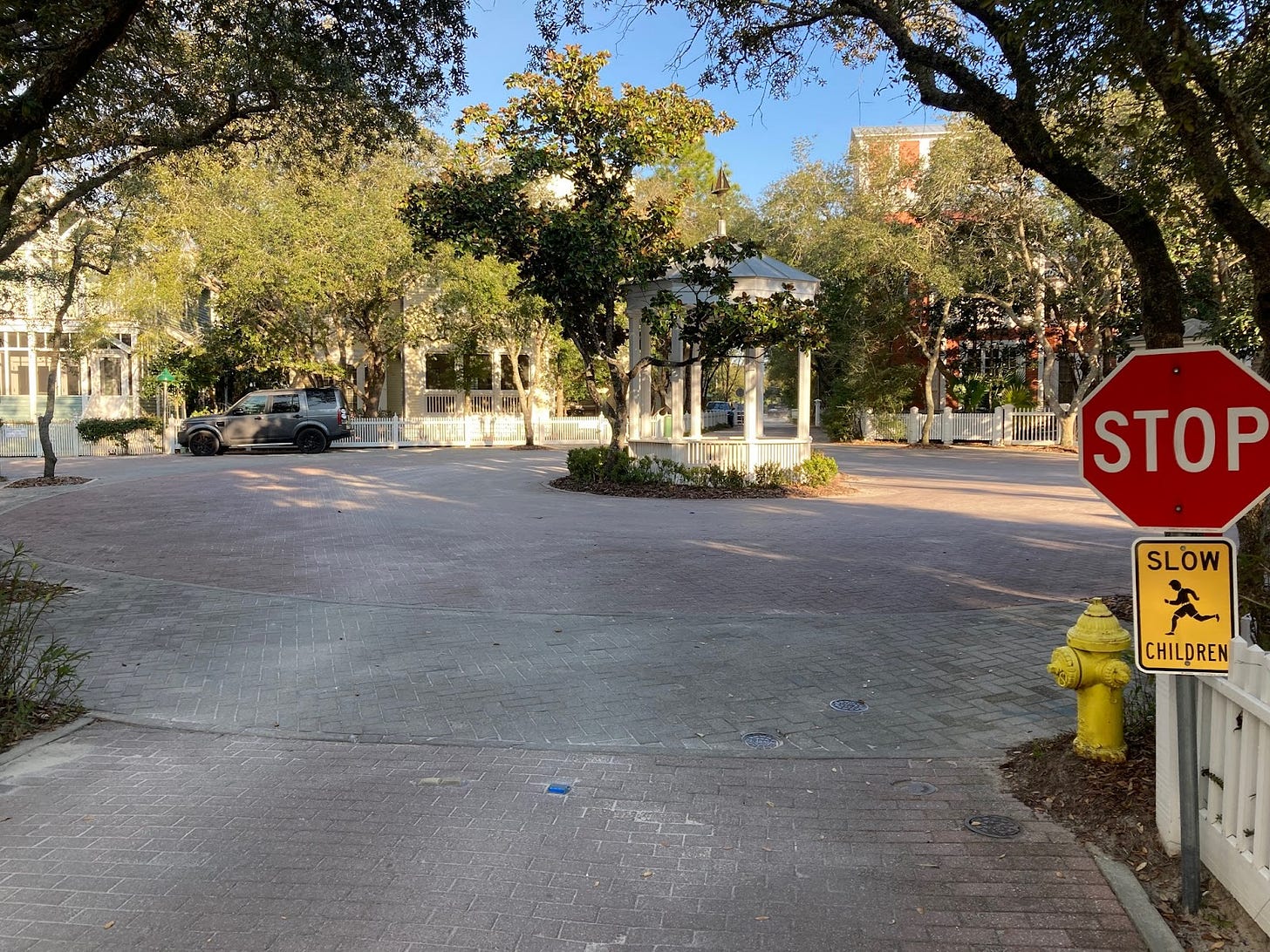
No next increment of intensity
As an incremental neighborhood developer, I was particularly struck by the way that Seaside feels “finished.” There’s no mechanism by which a building or block can move to the next increment of development–from a single-detached house, to a three- or four-plex, to a mixed-use building, to party wall townhouses (as at Ruskin Square). I don’t know if they meant to, but they ended up building to a finished state. In fifty years I would expect housing values to have increased, the houses to have gotten larger and nicer, but to see no real evolution of the town. Using airstream trailers to create affordable retail spaces is a great idea for the first decades of a place – but will they increase in intensity or be preserved as artifacts?
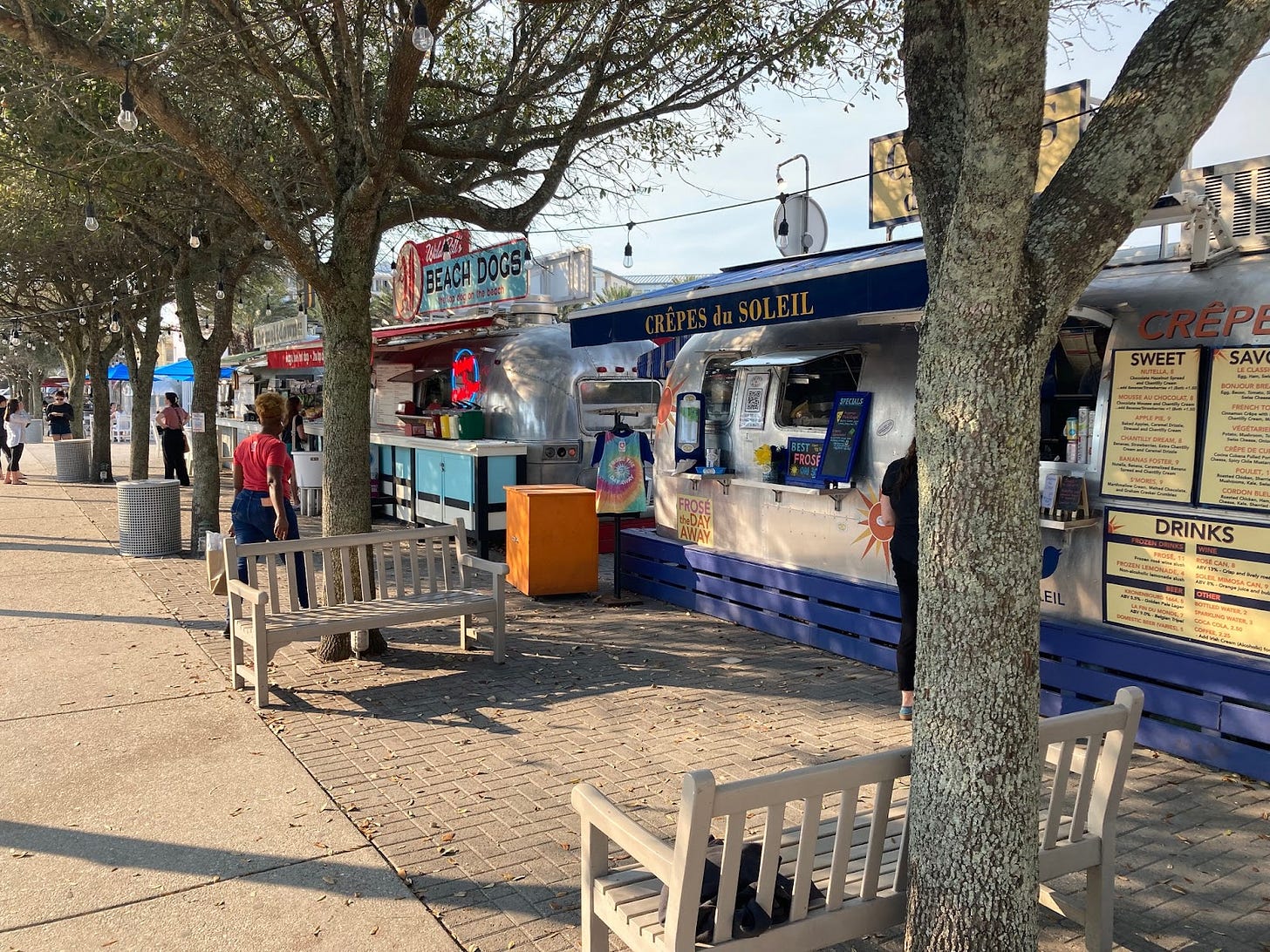
You’ll get things wrong, and learn from it
Andres Duany, the lead architect, is the first to admit the many mistakes that they made. Among the mistakes Duany pointed out while leading the guided tour are that retail logia (retail set back behind a row of columns and overhang) for some reason they never really work. The main square is much too large for the scale of buildings around it. It would be far from human scale if not for the row of mature palms that break up the space into more comfortable outdoor rooms. I don’t see Seaside as a temple, but rather a very successful rough draft. There’s a lot to learn from it, and a lot of that learning comes from things that we can do better next time.
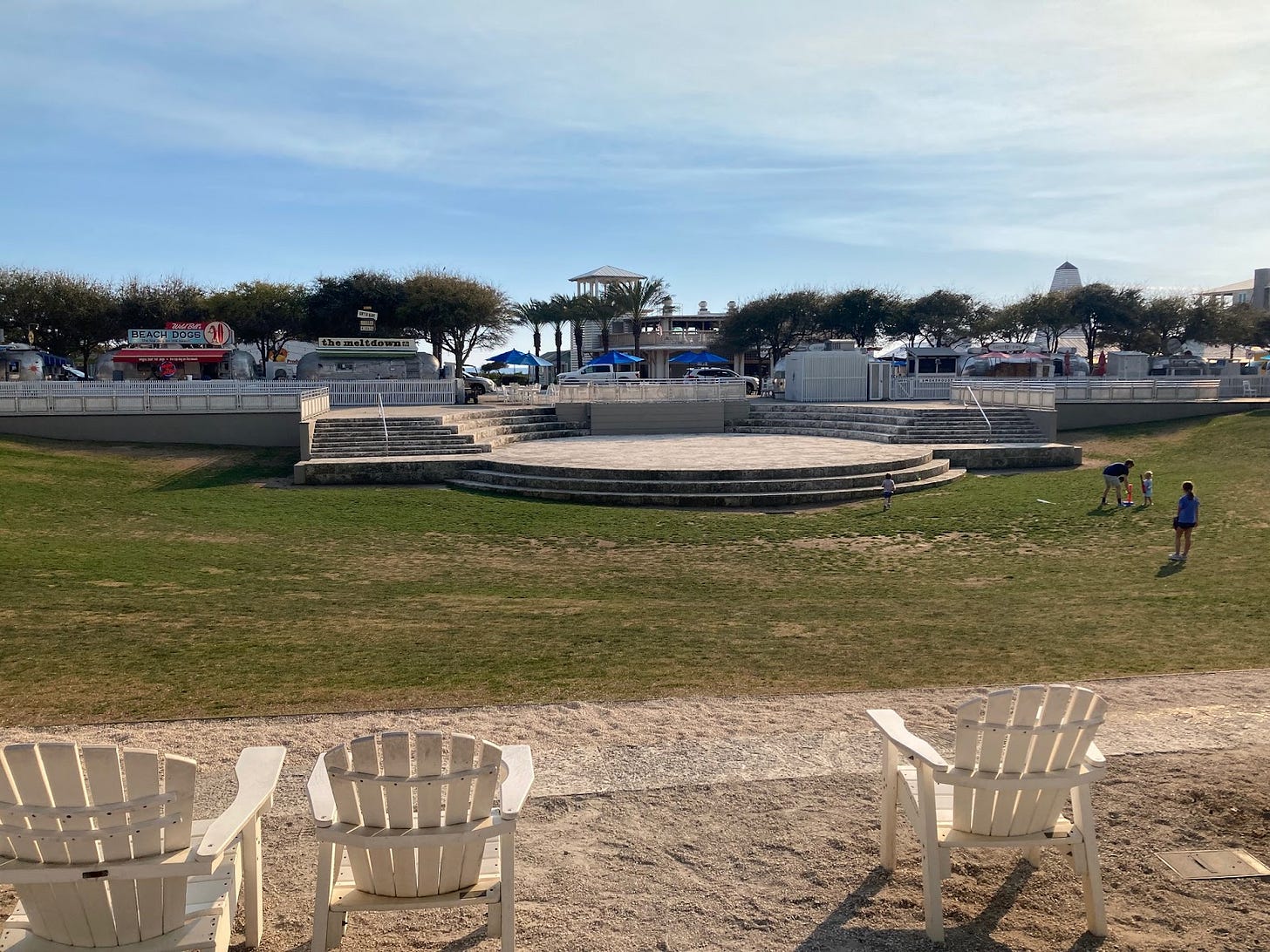
Conclusions
What stays with me more than anything is the feeling that you could never build Seaside today. That our rules, our professions of engineering, planning, architecture, our public utility requirements, our building codes, our financial industry, our local boards and commissions, etc. would mandate a higher-cost, less incremental, more packaged, less playful, more “finished state” town-building model today.
Walkable, humane urbanism is in such short supply that it becomes very expensive whenever it is created (from scratch as at Seaside, or through the retrofitting of existing neighborhoods, a.k.a. ”gentrification”). To build more good urbanism, we need not only good architecture, better zoning and building codes, reform of utilities and engineering requirements, and an emphasis on walkable streets–we need to recover the business-model of development that built the places we most love. I can’t help but think we’d have better cities and towns with a lot more small movers, closer to the ground–more common sense and iteration than mathematical models and code books.

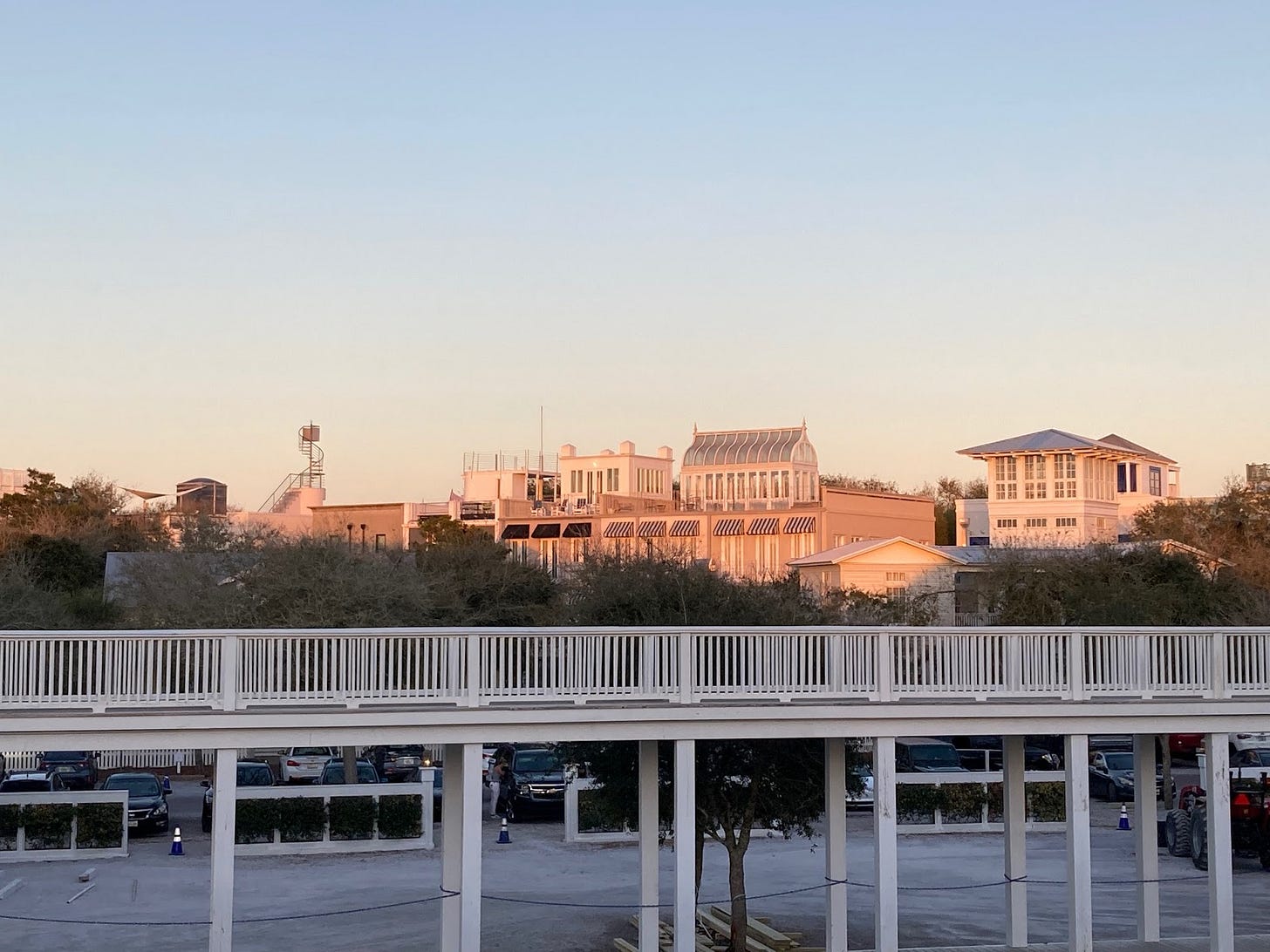

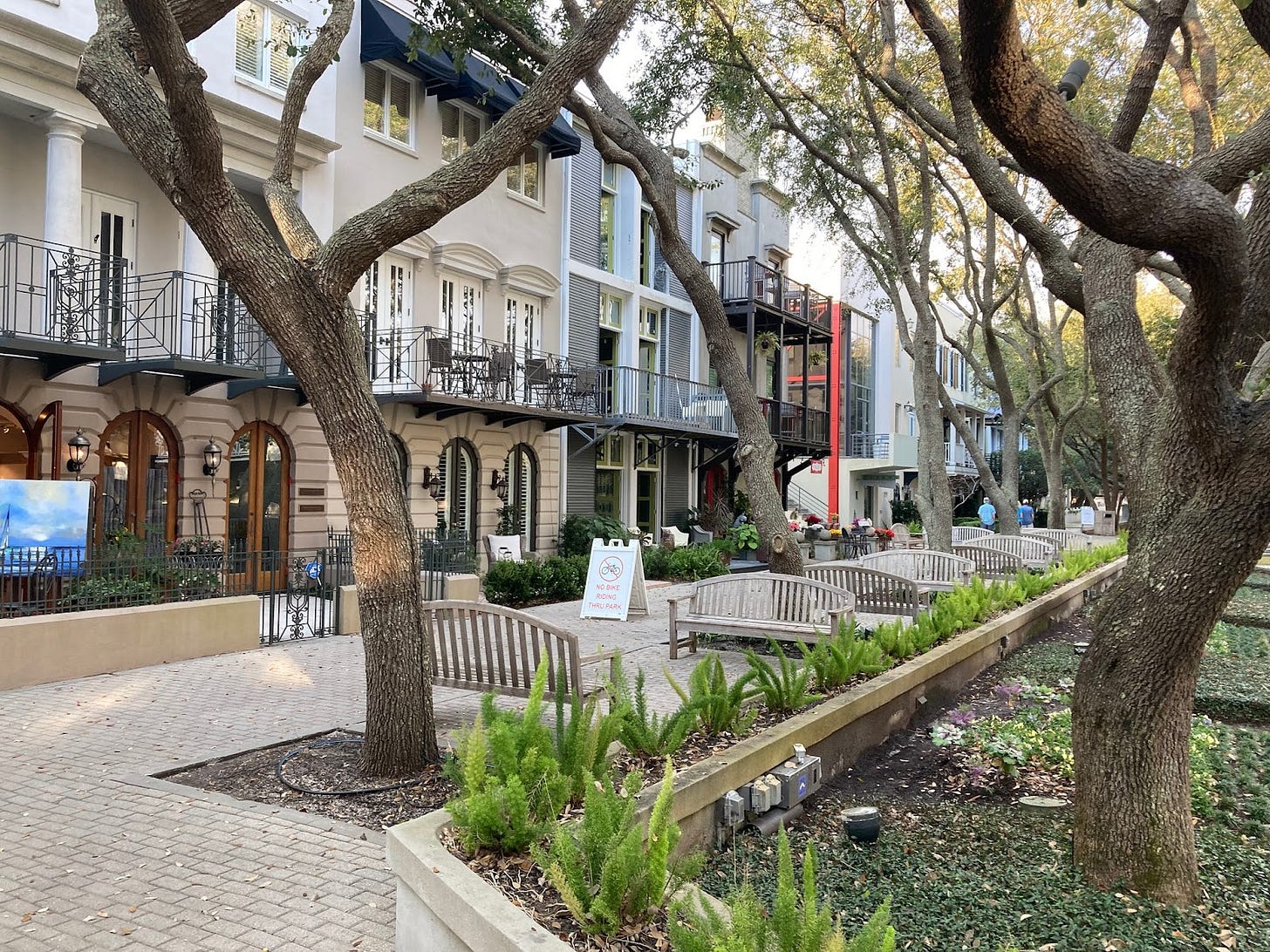
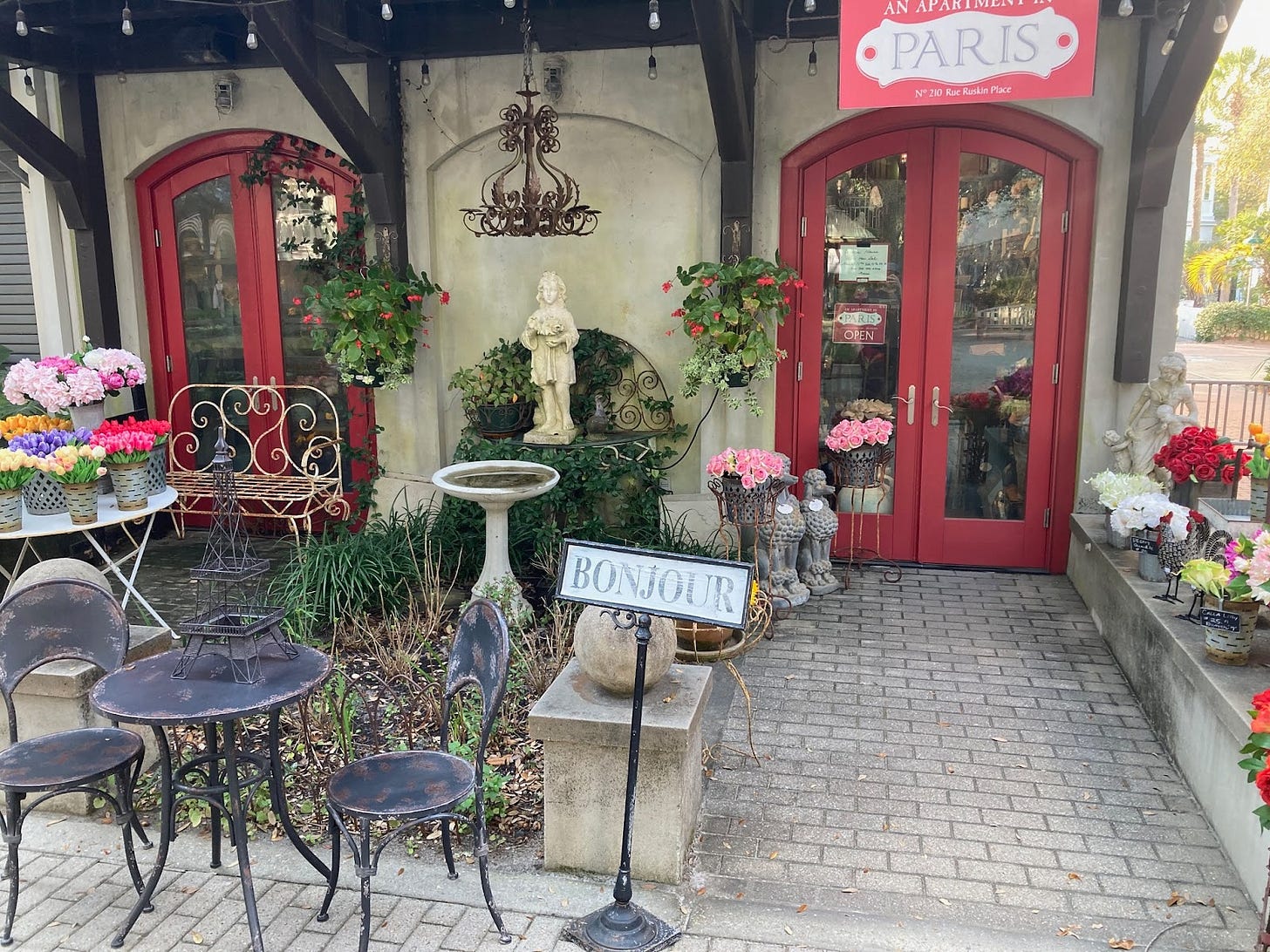
I’m glad you got to experience it personally, especially with the designers; I hope to some day. I’m not clear on what weird trick you were referring to. Not sure it matters though as I’m more interested in a follow up to this article with “Learning from Seaside.” It’d be great to learn what Andres learned, the “failures”, and to see how other & newer New Urbanism developments have improved on what Seaside did. Of course being a resort vs full time living development, it’s lacking a lot of the resources to raise a family or have an income that can’t be done by computer; probably not easy to do a direct comparison as such. Another spin-off article would be how Seaside could be developed more incrementally, assuming it would be allowed; this is a topic that needs a LOT more fleshing out, especially for greenfield development.